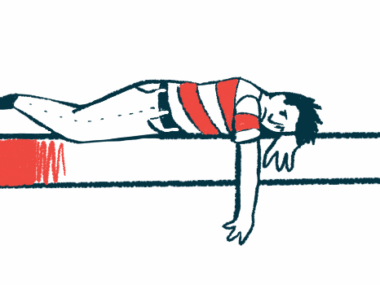Almost Half of EDS/HSD Patients Have Psychiatric Disorders, Canadian Study Finds
Written by |

Psychiatric disorders, namely depression, may affect almost half of patients with Ehlers–Danlos syndromes (EDS) and hypermobility spectrum disorder (HSD). Also, mental health problems may be associated with pain and gastrointestinal dysfunction in these patients, a study shows.
These findings, researchers contend, support the need to screen for mental health disorders in these patients, particularly the ones with those particular symptoms, in order to improve their quality of life.
The study, “Pain and gastrointestinal dysfunction are significant associations with psychiatric disorders in patients with Ehlers–Danlos syndrome and hypermobility spectrum disorders: a retrospective study,” was published in the journal Rheumatology International.
Approximately 90% of EDS cases are due to a genetic defect on genes that have the information for the production of collagen, the most important constituent of connective tissue. HSD is a broader definition used to identify joint hypermobility cases for which genetic cause is unknown.
Patients with EDS and those diagnosed with HSD experience several physical manifestations, mainly joint and skin hyperextensibility, and tissue fragility. Psychiatric disturbances also have been reported in these patients.
To further explore the incidence and type of psychiatric disorders among EDS and HSD patients, researchers reviewed the clinical records of 79 and 312 patients with EDS and HSD, respectively, who were being followed at two Canadian health centers. They had a mean age 36.2 years and the majority (85.6%) were women.
Among the patients diagnosed with EDS, the most common subtype of the disease was classical EDS (44 patients), followed by classical-like EDS (31 patients), and other subtypes (four patients).
Musculoskeletal problems and pain were the most common symptoms, reported in 96.9% and 85.7% of patients. Other common disease-related complications included gastrointestinal (GI), skin, neurological, and blood-related symptoms.
In all 391 patients, researchers found that 49.4% had psychiatric disorders, with 28.9% of those patients having two or more mental health conditions.
Mood alterations like depression were the most common disorder, affecting 34.5% of patients, followed by somatoform disorders (28.6%). In somataform disorders patients experience physical symptoms like pain and fatigue with no clear physical cause.
This group of HSD and EDS patients was found to have higher incidence of psychiatric disorders compared to the general Canadian population. Specific disorders that were more frequent among these patients included depression and anxiety. Attention-deficit and hyperactivity disorder (ADHD) also was found to be more frequent in patients with HSD, but not within the group of EDS patients, than in the general population.
When the team analyzed the incidence of psychiatric disorders according to EDS and HSD symptoms, they found that muscle/body pain and GI dysfunction were significantly associated with mood disorders. In addition, GI dysfunction and nerve-related pain were more linked to the incidence of anxiety, a somatoform condition.
Common EDS and HSD manifestations, including joint hypermobility, recurrent joint dislocations, and skin hyperextensibility, were not found to be linked to psychiatric disorders, neither were presence of other illnesses, such as heart or autoimmune diseases.
Collectively, “these results support the importance of screening for mental health disorders in HSD and EDS patients, particularly those with pain and GI symptoms,” researchers wrote.
“Awareness of associations between multisystemic manifestations of HSD/EDS and psychiatric disorders will aid physicians in providing optimal management for patients and to identify those at higher risk for mental health disorders,” they added.





